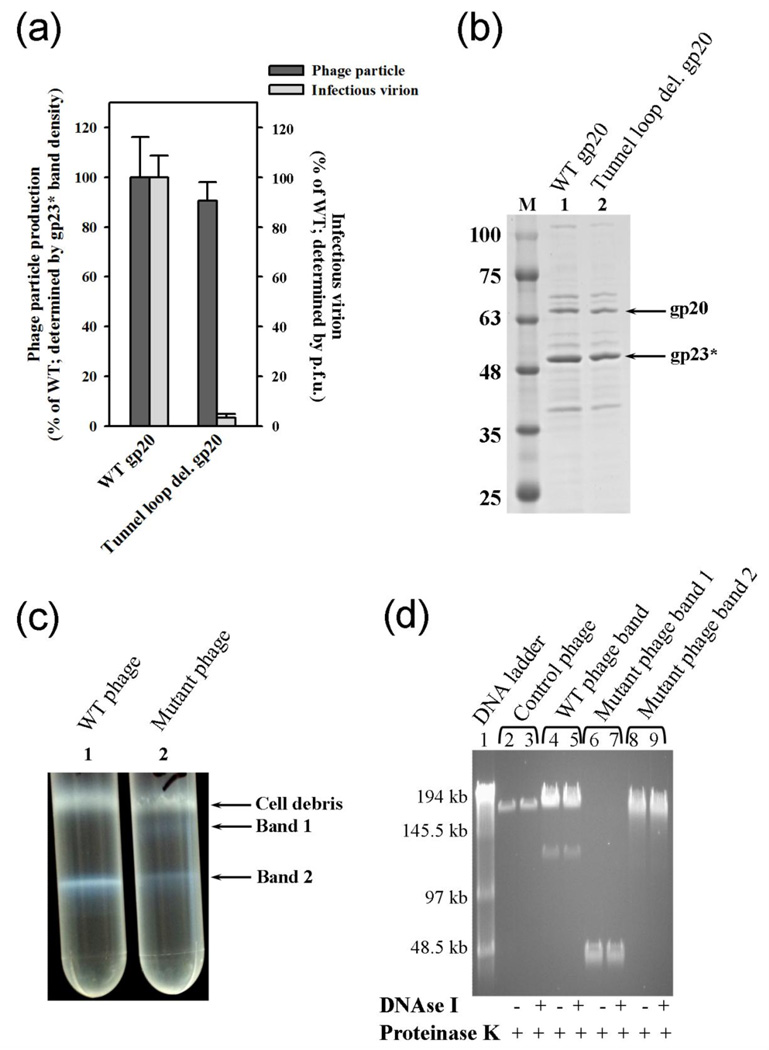Fig. 10.
The tunnel loop mutant produces non-infectious virus particles containing shorter genomes. (a) Histogram showing the infectious titer of the phage particles produced. The particle number was determined by quantifying the gp23* band intensity of lanes 1 and 2 in (b) (black). The infectious titer was determined by plaque assay (grey). Error bars represent standard error. (b) 4–20% gradient (w/v) PAGE showing the protein pattern of phage samples produced from plasmid-expressed gp20. Approximately 109 phage particles (4 × 108 pfu) produced from WT gp20 and 5 × 108 phage particles (6 × 106 pfu) produced from tunnel loop deletion mutant gp20 were loaded. M represents the molecular weight standards. (c) The phage particles produced by the WT heads and tunnel loop mutant heads were subjected to CsCl gradient centrifugation. (d) Phage particles isolated from (c) were treated with DNAse I followed by proteinase K, or proteinase K only, as shown by “+” or “−” rows under the figure. The samples were then subjected to pulse field agarose gel (0.8% w/v) electrophoresis to separate the large DNAs. The phage λ DNA ligation ladder (lane 1) was used to determine the size of DNA present in the particles. Lanes 2 and 3 are the DNA isolated from control WT T4 phage. Lanes 4–9 are the DNA isolated from phage fractions from the CsCl gradient centrifugation (c).

